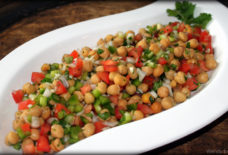The 11 Cheeses of the Arab World
By: Lindsey Penn/Arab America Contributing Writer
Cheeses are popular in the Arab world, whether they are in the desserts or the entrée. For that reason, the Arab world has so many different types of cheese to go with all of the unique flavors. The following is a list of some classic cheeses from the Arab world. There are some recipes to make the cheeses at home or classic recipes that use the cheeses.
Feta Cheese
Although feta cheese originated in Greece, it is still popular in the Arab world. Feta is made from either pasteurized or unpasteurized sheep’s or goat’s milk. It is a soft and brined cheese with a salty taste and creamy texture. Usually, the feta is kept in brine to emphasize its salty and tangy taste. If you’re looking for an Arab food recipe using feta cheese, you can find a Fattoush recipe here.
Baladi
Originating in Lebanon, Baladi is made from unpasteurized goat’s, cow’s and sheep’s milk. It is a soft cheese with a creamy and dense texture. Baladi cheese doesn’t have a strong taste but is mild and buttery. The cheese comes from Baladi goats from the local shepherds. One recipe for Baladi is here and it goes well with bread, olive oil, and herbs.
Akkawi
Akkawi cheese is from the Levant (plus Egypt). This cheese is made from pasteurized sheep’s, cow’s, or goat’s milk. Like the first cheeses on this list, it is soft and brined with a smooth texture. It has a mild salty and milky taste. The cheese is commonly eaten with fruit, or in rolls like this one.
Shanklish
Shanklish is a cheese from Egypt, Lebanon, and Syria. It is a blue cheese (meaning it is pungent and creamy yet crumbly) and made from the milk of cows or sheep. Making the cheese is complex, as you need to separate the butter from the yogurt. Shanklish can be eaten both fresh and aged for different tastes. A classic recipe for shanklish is shanklish balls with zaatar.
Nabulsi Cheese
Nabulsi cheese’s name is because of the region it is from, Nablus. Made from pasteurized sheep’s or goat’s milk, this cheese is semi-hard with a dense texture and salty flavor. It can be used in knafeh, but is more commonly fried in oil. Here is a knafeh recipe with Nabulsi, but if you want to make your own Nabulsi cheese, here is another recipe.
Labneh
The texture of labneh is similar to cream cheese and is very popular throughout the Middle East. It is rising in popularity because it is a healthier substitute for cream cheese. Labneh is made from yogurt that is made from cow’s milk. The cheese is made when someone strains the yogurt until the whey comes out. It is good with sweet or salty foods, as a dip or alone, or in recipes. For example, here is a recipe with labneh and zaatar, two of the staples of Middle Eastern cuisine.
Jibneh Arabieh
Jibneh arabieh directly translates to “Arabic cheese”, named because it originates in the Middle East. It is a semi-hard cheese with a firm texture and mild flavor. It could be fried in a pan, served with sunny side up eggs, eaten with pickled olives, or incorporated into knafeh. Here is a recipe to make your own jibneh arabieh.
Halloumi
Halloumi is a cheese that originated in Cyprus but is now very common in the Arab world. It can be made from pasteurized and unpasteurized milk from cows, goats, and sheep. The cheese is semi-soft, but has a very unique texture: it is springy and chewy. Halloumi also has a tangy taste. Because of its texture, it can be fried or grilled super easily. Here is a recipe for halloumi.
Majdouli
This cheese originated most likely in Syria and is also known as jadala suria. It is a salty and stringy cheese. Majdouli can be spiced with black cumin to add another flavor. The name means “braided”, as the cheese is usually in a braid. Here is a recipe for a Syrian sweet that uses majdouli.
Jibneh Mshallaleh
Another twisted or braided cheese jibneh mshallaleh uses cow’s milk and spices called mahlab to achieve its taste, which has seeds from the Nigella Sativa plant. The cheese is known for its elasticity, which is a result of the culturing process. Here is a fatayer recipe that has jibneh mshallaleh in it.
Check out Arab America’s blog here!







